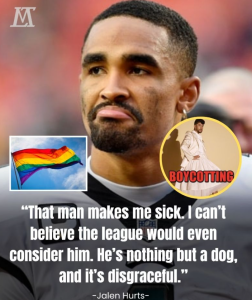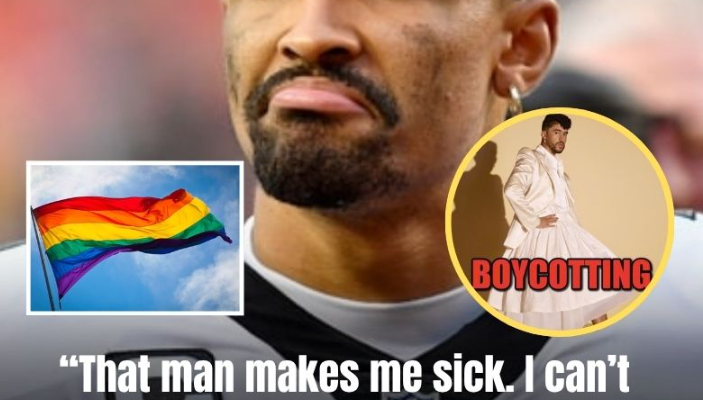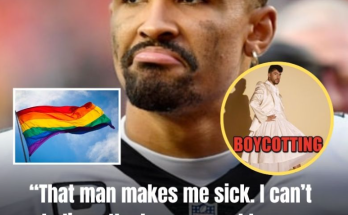
A storm has erupted across America as the NFL faces growing backlash over its decision to select Bad Bunny as the headliner for the upcoming Super Bowl LX halftime show. What was supposed to be a celebration of one of the world’s biggest sports events has instead turned into a cultural and political firestorm, with fans, commentators, and even a few players weighing in. The controversy highlights the growing tension between the league’s push for diversity and inclusion and segments of its fan base that see those efforts as a departure from what they call “American tradition.”
When the NFL announced that Bad Bunny, the Puerto Rican global superstar, would perform at the halftime show, many celebrated the move. Bad Bunny is one of the most streamed artists on the planet, known for his genre-blending reggaetón and trap hits, his bold fashion, and his outspoken advocacy for marginalized communities. For the league, it seemed like a forward-thinking choice that reflected the growing influence of Latin music and the global reach of the NFL brand.
But within hours of the announcement, social media began to erupt. Some conservative fans and commentators claimed the decision was politically charged, accusing the league of promoting an “agenda” rather than focusing on football and entertainment. The criticism intensified as old interviews and music videos of Bad Bunny resurfaced online, showing his gender-fluid clothing, performances in drag, and public support for LGBTQ rights. Critics accused the NFL of pushing what they described as “woke culture” on viewers who simply wanted to watch the game.
Soon, the controversy took on a political edge. Prominent conservative voices, including commentator Jason Whitlock, blasted the NFL for “abandoning its traditional audience.” Others accused the league of ignoring American culture in favor of what they saw as globalism. Petitions began circulating online demanding that the league replace Bad Bunny with a “true American artist,” and one of the largest petitions called for country legend George Strait to headline instead. Within a week, the petition gathered more than 250,000 signatures, with its organizers claiming the halftime show should represent “American values, family, and patriotism.”
In Texas, state officials including Attorney General Ken Paxton publicly criticized the NFL’s choice, accusing the league of “mocking traditional America.” In a social media post, Paxton wrote that the halftime show had become “another platform for the cultural elite to lecture working Americans.” His post went viral among conservative circles, fueling the #BoycottSuperBowl trend on X (formerly Twitter) and other platforms.
Meanwhile, the NFL stood firm. Commissioner Roger Goodell defended the selection, calling Bad Bunny “one of the most dynamic and popular performers in the world.” In a press conference, he said the league would not bow to political pressure or petitions, insisting that the halftime show was designed to reflect the diversity of football’s audience and the cultural shifts shaping the country. “The NFL represents America’s broad, evolving identity,” Goodell said. “We’re proud to feature artists who resonate with fans of every background.”
Despite that statement, outrage among some groups continued to build. Critics accused the NFL of hypocrisy, arguing that the league often promotes patriotism with military flyovers and national anthem tributes but now seemed willing to “sacrifice tradition for attention.” On conservative talk shows, commentators said the move was evidence that “Hollywood and corporate America have taken over the NFL.”
However, Bad Bunny’s supporters pushed back, pointing out that the artist’s success represents a changing America—one where Spanish-language music dominates global charts, and younger audiences embrace inclusion and individuality. Many fans praised the NFL for choosing a performer who reflects the diversity of the modern United States. Latin American and LGBTQ communities, in particular, celebrated the announcement as a long-overdue recognition of voices that have traditionally been sidelined from such mainstream platforms.
Still, the controversy grew after rumors began circulating online that some players were “considering sitting out” promotional events for the Super Bowl in protest. These claims spread rapidly, with one viral post suggesting that Philadelphia Eagles quarterback Jalen Hurts had “slammed” the league’s decision. But major outlets including the Associated Press and Reuters confirmed that no such statement had been made. Hurts’ representatives denied the rumor, calling it “fabricated nonsense.” The false report, however, underscored how quickly misinformation can intensify public outrage in today’s digital climate.
The NFL, aware of how damaging such rumors could become, quickly issued clarifications through official channels. League spokespersons reiterated that no players had threatened to boycott or quit over the halftime show. Instead, they framed the backlash as a small but vocal minority that didn’t represent the majority of fans. Data from marketing analysts seemed to support that: polls showed that while about 30 percent of respondents disapproved of the choice, a majority either supported it or didn’t care.
But the debate has raised deeper questions. For many critics, the issue isn’t just about Bad Bunny—it’s about what they perceive as a gradual cultural shift in sports entertainment. The NFL’s halftime show has evolved from a simple musical intermission into one of the most-watched performances on Earth. With over 100 million viewers, the performer becomes a symbolic representation of America itself. Each selection is scrutinized not only for entertainment value but for what it says about national identity.
In previous years, artists like Beyoncé, Shakira, and Rihanna faced similar backlash for their politically charged or boundary-pushing performances. But Bad Bunny’s case stands out because his identity as a Puerto Rican artist and his embrace of gender fluidity strike at the intersection of race, sexuality, and national culture—topics that continue to divide audiences.
From a business perspective, the NFL’s choice makes sense. Bad Bunny’s last world tour generated over $400 million, and his streaming reach spans continents. The league hopes that his presence will help draw in younger, more diverse viewers, particularly from Latin America, where football viewership is rapidly growing. Analysts argue that this is part of a long-term strategy to globalize the sport’s appeal.
Still, the economic calculus hasn’t shielded the NFL from reputational risks. Some advertisers are reportedly monitoring the situation closely, wary of associating their brands with controversy. A few conservative-leaning sponsors have already faced calls from customers to reconsider their Super Bowl campaigns. Marketing experts warn that if the backlash continues, it could complicate ad placements for what remains the most expensive advertising slot in television.
As the Super Bowl approaches, both sides of the debate are digging in. Boycott advocates plan to stage a “Patriots for America” livestream during the halftime show, encouraging fans to switch off their TVs in protest. Supporters of Bad Bunny, meanwhile, are organizing watch parties and online campaigns celebrating representation and diversity in sports entertainment.
Culturally, the debate exposes a growing generational gap. Younger fans see Bad Bunny as a voice of freedom and authenticity, someone who refuses to conform to outdated gender or cultural norms. Older or more conservative viewers see him as emblematic of a moral and cultural drift away from the values they grew up with. The Super Bowl halftime stage, it seems, has once again become a mirror reflecting America’s culture wars.
Bad Bunny himself has not commented directly on the controversy, though in past interviews he has said that he doesn’t make music to please everyone. “Art is expression,” he told Billboard last year. “If someone feels uncomfortable because I’m being myself, that’s their problem, not mine.” It’s unclear whether he will reference the controversy during his Super Bowl performance, but if history is any guide, he may choose to make a subtle statement through his staging, wardrobe, or choreography.
Whether the uproar fades or escalates will depend on how the NFL manages the next few months. The league is expected to double down on its messaging around inclusion and entertainment, while also reassuring fans that the event remains a unifying experience. Goodell and the halftime show’s producers are reportedly in close contact to ensure that the performance remains high-energy and apolitical—at least on the surface.
But in reality, the cultural meaning of the show has already shifted. The very act of putting Bad Bunny on the stage is a statement in itself—one that says the NFL is no longer just catering to one vision of America. It’s embracing a broader, more complex national identity, one that includes Spanish-speaking audiences, LGBTQ representation, and artistic freedom.
As the countdown to Super Bowl LX continues, all eyes will be on how the controversy unfolds. Will the boycott fizzle out, or will it mark a turning point in the relationship between sports and politics? For now, one thing is certain: the halftime show, once a simple spectacle, has become a cultural battlefield. And the outcome will say as much about America’s values as it does about its music.

